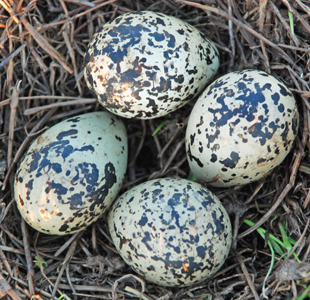 Funny story... I was down at the estuary the other day lying face down in the mud (as you do) taking photos of bar-tailed godwits which were feeding on the mud flats at low tide (right). The spot I was in was just off the main road across from some newly built flashy apartment buildings. I was quietly enjoying watching these beautiful birds through my viewfinder when I noticed that the birds began to stir as if frightened (weird I thought - I was lying motionless and still some distance away it couldn't be me could it?) Anyway I kept snapping for a minute when I heard some footsteps through the mud behind me and before I had a chance to turn around I heard... "It doesn't look good, nah, It doesn't look good!", then I heard a voice call out "Mate can you hear me, are you alright?" It was some poor guy in a suit who thought I was a dead body washed up with the tide!!! Poor guy! He had walked through ankle deep mud to check on me with his good shoes on,."*#@^!" he swore at the fact he got all muddy for no reason! Anyway I thanked him for his concern and he was off on his way - unfortunately I didn't get many shots but I left with a bit of a red face and a funny story hahaha!
Funny story... I was down at the estuary the other day lying face down in the mud (as you do) taking photos of bar-tailed godwits which were feeding on the mud flats at low tide (right). The spot I was in was just off the main road across from some newly built flashy apartment buildings. I was quietly enjoying watching these beautiful birds through my viewfinder when I noticed that the birds began to stir as if frightened (weird I thought - I was lying motionless and still some distance away it couldn't be me could it?) Anyway I kept snapping for a minute when I heard some footsteps through the mud behind me and before I had a chance to turn around I heard... "It doesn't look good, nah, It doesn't look good!", then I heard a voice call out "Mate can you hear me, are you alright?" It was some poor guy in a suit who thought I was a dead body washed up with the tide!!! Poor guy! He had walked through ankle deep mud to check on me with his good shoes on,."*#@^!" he swore at the fact he got all muddy for no reason! Anyway I thanked him for his concern and he was off on his way - unfortunately I didn't get many shots but I left with a bit of a red face and a funny story hahaha! Below are a few photos of birds I've been working on recently (please click on them to view them larger). I've found the New Zealand shovelers (a sub-species of the Australasian shoveler) to be a real challenge photographically... I've found them to be really skittish - making stalking them quite difficult. So I dedicated three afternoons to the shovelers and decided to set up a hide on a small pond which I knew they frequented, and waited for the birds to come to me. On the first attempt this handsome male (below) showed up at the back end of the pond and started dabbling happily away, just out of reach of a good shot - he stayed a frustrating distance away from the camera, as if he knew of the crazed photographer who lay in wait! Luckily for me another male landed shortly after and chased the bird right towards my hide giving me enough time to snap a few pics before flying off. Unfortunately the next two attempts at them didn't yield any better shots :( ... I'll be back out there soon to try again (that's wildlife photography for you).

Male New Zealand Shoveler (Anus variegara)
Juvenile Pied Stilt (Himantopus leucocephalus)
The endemic Black-billed gull (Larus bulleri)



















































